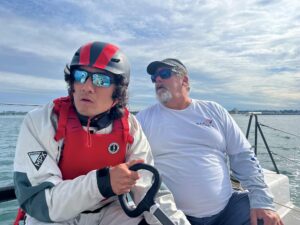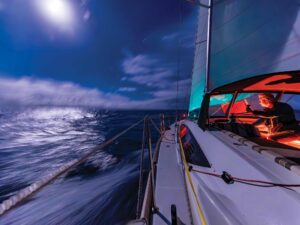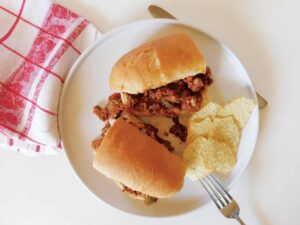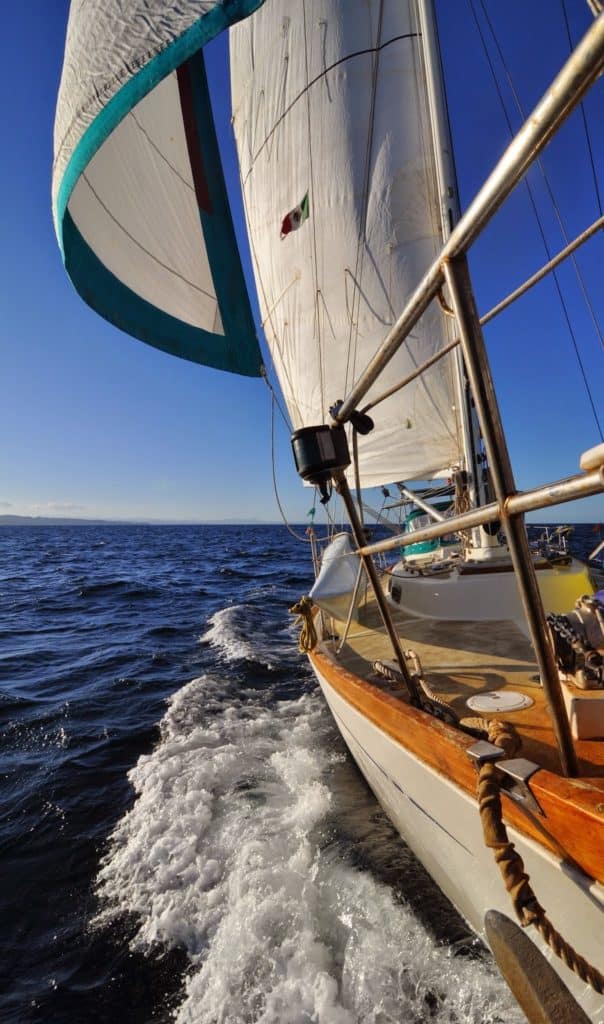
I’ve always wanted to be an author. In kindergarten I made a shoebox diorama that made this clear. Displayed among the other dioramas that featured pilots and astronauts and veterinarians and movie stars, mine depicted a lonely construction paper man seated at a tiny cardboard table on which sat a tiny cardboard typewriter. A sheaf of tiny blank pages was stacked neatly beside the tiny cardboard typewriter.
Well, more than forty years have passed since kindergarten and my dream job is finally a reality (though I no longer own a typewriter). As already announced elsewhere (like at the end of this blog post, or in the second paragraph of this blog post), Behan Gifford, Sara Johnson, and I signed a book contract with the publisher L&L Pardey Books!
The three of us are collaborating to write a non-fiction book to be called Voyaging with Kids: A Guide to Family Life Afloat. It’s scheduled for release in 2015.
For the benefit of other writers and aspiring authors, I’ll share with you how this came to be and then, in later posts, how things are going. I eat up this kind of info when I find it online, so sharing my story is a chance to give back.
An Idea
Cruisers depend on cruising guides, to orient them to the places they visit. These guides include aerial photography and hand-drawn chartlets to show how best to enter an anchorage and where the underwater hazards are. Small maps often mark the locations of customs or immigration buildings, supermarkets, and laundry services. They’re practically indispensable.
When we moved aboard Del Viento, I brought with me the Baja cruising guides that Windy and I used 15 years before. There was another, newer guide on the scene, but I’d once thumbed through it at a boat show and discounted it. It was a pretty book, the pages filled with gorgeous, unhelpful photographs like you’d find in a tourist brochure. Shawn Breeding and Heather Bansmer’s pretty book belonged on a coffee table. I valued the dense, no-nonsense guides of yesteryear; Jack Williams and Gerry Cunningham and Charles Wood knew how to write cruising guides. And though those books were old, the anchorages haven’t moved, how much could have changed? The last thing the world needed was another Baja cruising guide.
But everyone has a copy of Shawn and Heather’s pretty book, it’s all anyone uses down here. I secretly pitied this new generation of Baja cruisers with their colorful, but inferior, guide.
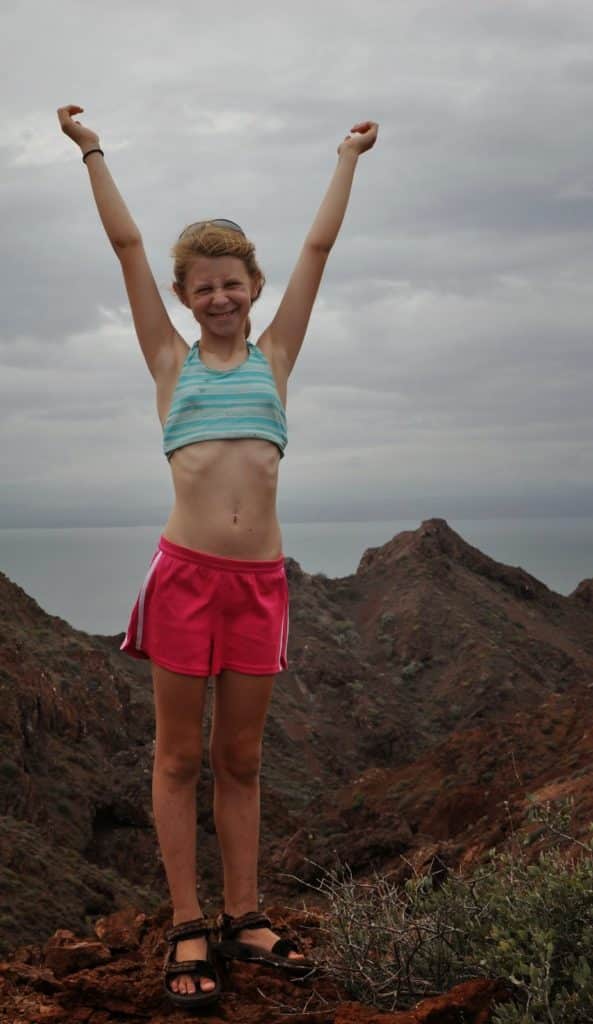
Then Windy bought a copy of the pretty book. For the next several months, for every anchorage we approached, I’d open up all the other guides and compare their information to Shawn & Heather’s guide. Rarely did I find the pretty book lacking. It was usually better. Today, I can’t tell you where the other guides are stowed.
What stuck with me from this experience was that I was wrong, the world did need a new Baja cruising guide. Shortly after this realization, I found myself on a warm, clear, tropical night watch. Amped up on dark chocolate espresso beans and This American Life, my mind wandered all over the place until an epiphany dawned: the world needs another guide to cruising with kids! There are more and more families out here each year and the only informative books available to them are more than a decade old and recount lessons learned by families out there two decades ago. Things have changed!
The Approach
The next book on this topic had to be good, it had to bring something new to the table. I knew there are as many different ways to go voyaging with your kids as there are families out there doing it. I knew my perspective, gained over the previous three years cruising Mexico to Alaska to Mexico was relatively narrow. We didn’t have infants or toddlers or teenagers aboard. We’d not crossed an ocean with our kids. I didn’t want to write a shallow, dogmatic book. I needed the perspectives of co-authors.
Within days of my idea occurring to me, I sent a manic email to Behan and Sara asking if they wanted to join me in this project. I made a few things clear. I didn’t want to write with just one other person because how would disagreements then be settled? I wanted this to be our project, not something they’re helping me with. From the start, we would all own this book, 33.3%, 33.3%, 33.3%.
They each responded with enthusiasm that inspired.
The Method
The three of us were on the fence for a while about whether to self-publish or pursue a traditional publisher.
Self-publishing is easy these days. You write your book and then you either pay others to get it print-ready, or do some or all of it yourself. But every manuscript must be edited, every cover must be designed, every book must be designed, text must be indexed, the eBook must be designed, rights must be secured, and an ISBN must be obtained. When ready, a printer must be paid and books must be warehoused and distributed (or printed on demand, at a much higher cost). Then the book has to be marketed, at book shows, at librarian’s conventions, to West Marine book buyers. In short, there is a lot of time, expertise, and money required to get a manuscript turned into a quality book and then put before potential book buyers. The primary advantage of self-publishing is that the author(s) makes more money for each book sold (assuming the publisher offers no advantage in terms of increasing sales, perhaps a bad assumption).
Ultimately, given our fiscal, time, and geographic constraints as cruising parents, we decided to seek a traditional publisher.
Non-fiction books are sold to publishers before they’re written, by way of a proposal. Weird, huh? But in the non-fiction world, what matters is whether there is a market for the book you propose and whether you have the ability to deliver the manuscript (in terms of writing chops) and the subject matter knowledge/credentials/authority to have your name on the cover. (Contrast this with the fiction world where there is always a market for a good book, but can you write a good book? The only way to answer that question is by having a completed manuscript to show a prospective publisher.)
So we wrote a proposal. This was a lot of work. In 87 pages (23,000 words), we presented a case for our book idea. In a nutshell, we delivered an intro to our book, a market analysis of competing titles, biographies to highlight our credentials, a marketing plan we could execute to help the publisher sell our book (we secured commitments from reviewers, we highlighted our own reach via our blogs and social media, we pointed out our relationships with magazine editors to whom we’d each sold articles), and we wrote and included two sample chapters.
Then we wrote a cover letter and sent our baby out to nearly a dozen publishers that specialize in the nautical book market. We considered the responses of several and in the end, we decided without reservation to accept the offer of L&L Pardey Books. Lin Pardey struck us all as a savvy, capable, and connected businesswoman. She has a team of expert designers and editors she works with and she uses Paradise Cay for book distribution (the largest distributor of nautical titles in the world). Lin Pardey is really nice too.
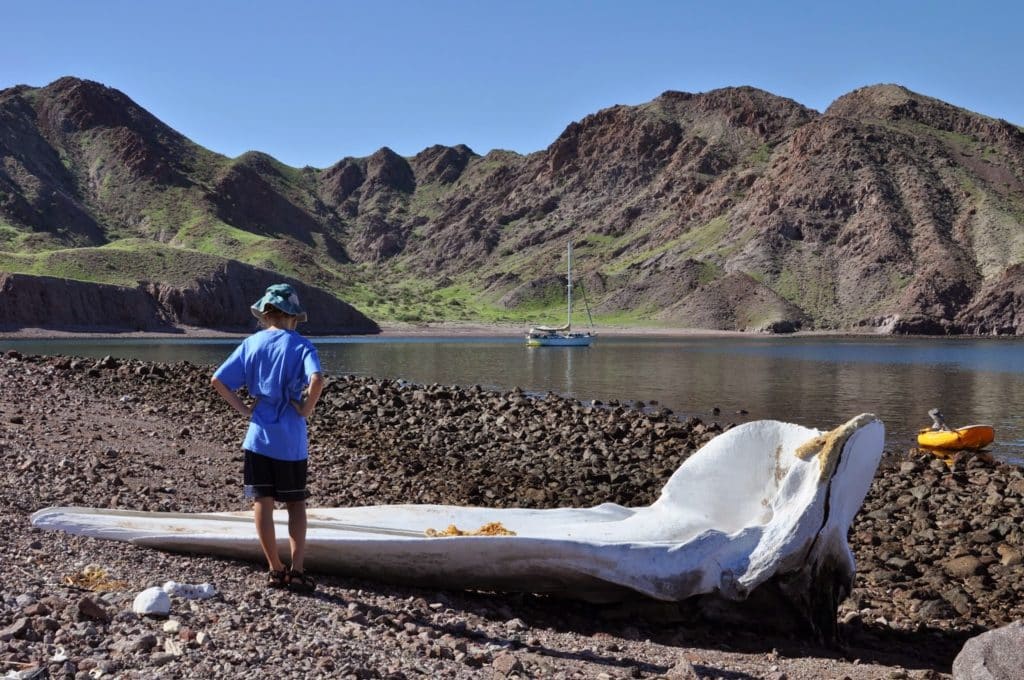
The Next Step
So we contracted with L&L Pardey Books back in May. We were given nine months to complete and deliver our manuscript. We’re all putting the final touches on our first draft now so that we can start the our internal editing process and polish it right up before delivering all our words and pictures to Lin in February.
It’s a lot of work, much more than any of us anticipated. But it’s also been a lot of fun. I’ve met fascinating people through working on this project and have strengthened two life-long friendships in Behan and Sara. We’re all eager, committed writers soon to be eager, published authors. It doesn’t get much better than this.
In our twenties, we traded our boat for a house and our freedom for careers. In our thirties, we slumbered through the American dream. In our forties, we woke and traded our house for a boat and our careers for freedom. And here we are. Follow along at http://www.logofdelviento.blogspot.com


